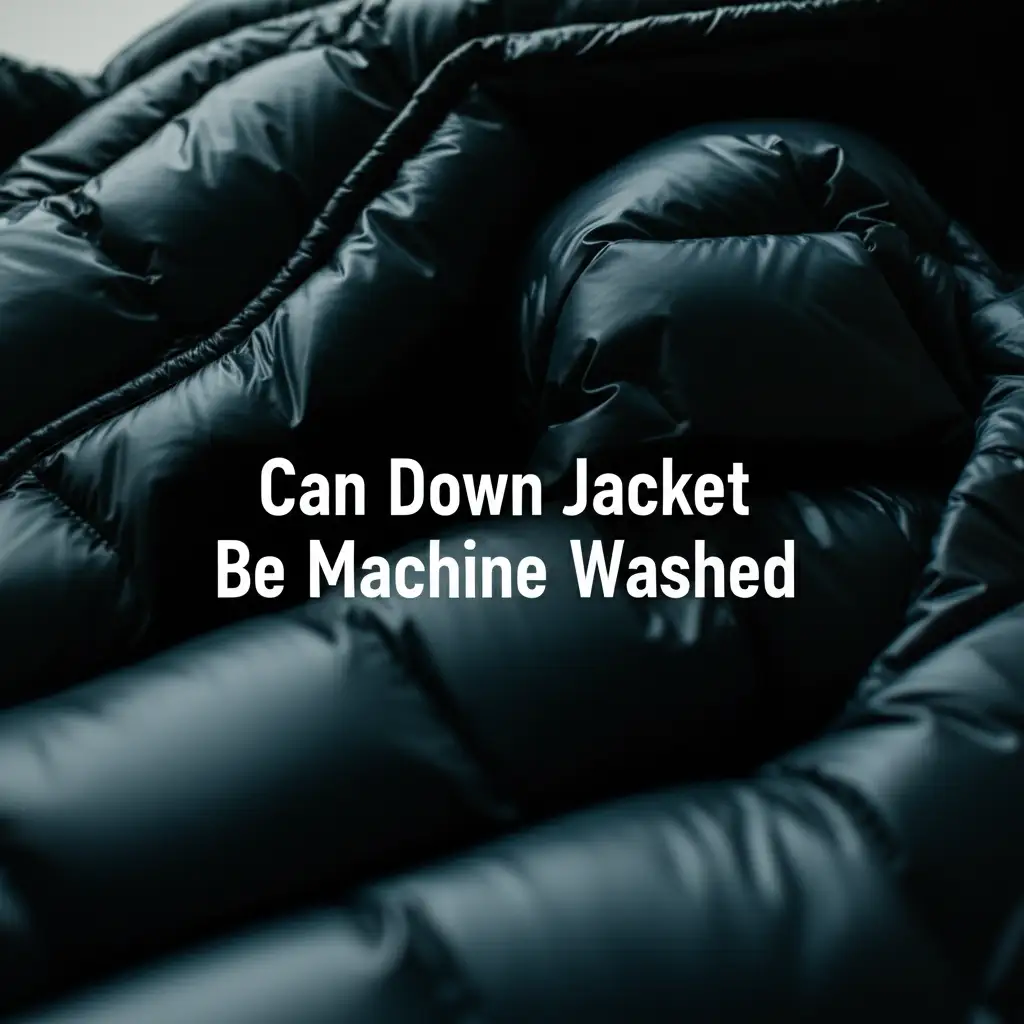· Elira Thomsen · Laundry Care · 13 min read
What Does 40 Degree Machine Wash Mean

Understanding 40 Degree Machine Wash Settings
Have you ever looked at a laundry label and wondered, “What does 40 degree machine wash mean?” You are not alone. This specific instruction appears on many clothing items. Understanding these symbols helps you care for your clothes properly. It prevents damage and keeps your garments looking new. A 40 degree machine wash instruction is very common. It guides you on the right water temperature for your laundry. This article will explain what this setting means. We will discuss its benefits and how to use it effectively. We will also cover which fabrics are best for this temperature. Get ready to master your laundry routine.
Takeaway
- 40 Degrees Celsius is a warm water wash. It is approximately 104 degrees Fahrenheit.
- Ideal for Most Fabrics: This temperature suits cotton, synthetics, and mixed blends.
- Effective Cleaning: It removes common dirt, stains, and odors well.
- Color Protection: It helps maintain fabric colors and prevents fading.
- Energy Efficient: It uses less energy than hotter washes.
- Check Care Labels: Always read garment labels before washing.
- Proper Sorting: Sort clothes by color and fabric type for best results.
A 40 degree machine wash means you should wash your garment in a washing machine using water at a maximum temperature of 40 degrees Celsius. This temperature is considered warm. It is suitable for a wide range of fabrics. It helps clean clothes effectively without causing shrinking or damage to most common materials.
Decoding the 40 Degree Machine Wash Symbol
Every clothing item has a story. This story often starts on its care label. The symbols on these labels tell you how to wash, dry, and iron your garments. When you see a symbol for a 40 degree machine wash, it is a clear instruction. This symbol usually looks like a tub filled with water. Inside the tub, you will find the number 40. This number indicates the maximum water temperature in degrees Celsius.
Sometimes, the symbol might have one line under the tub. This line means a moderate spin cycle. Two lines mean a gentle or delicate cycle. No lines mean a normal wash cycle. Understanding these small details makes a big difference. It ensures you treat your clothes exactly as intended. I always double-check these symbols before throwing anything into the machine. It saves a lot of trouble later. This little symbol guides your washing machine settings. It protects your favorite shirts and trousers.
Many people ignore laundry symbols. They just guess the right wash setting. This can damage clothes. Colors might fade. Fabrics might shrink. Items might even stretch out of shape. Knowing the 40-degree symbol prevents these issues. It tells you this is a safe, effective temperature for many garments. It falls between cold and hot water. This balance helps clean without harshness. It means your clothes come out clean and well-preserved. Taking a moment to read the label is worth it. For more general guidance on loading your machine correctly, you might find this article helpful: What Goes Where In A Washing Machine.
Why 40 Degrees? The Ideal Temperature for Most Fabrics
So, why is 40 degrees Celsius such a popular washing temperature? It hits a sweet spot. This temperature is warm enough to dissolve detergents effectively. It can lift everyday dirt, grime, and odors from fabrics. Yet, it is not too hot. Hot water can damage delicate fibers. It can also cause colors to bleed or fade quickly. A 40-degree wash strikes a good balance. It provides good cleaning power without being harsh.
This temperature helps preserve the integrity of many fabrics. It keeps clothes looking newer for longer. It reduces the risk of shrinking, especially for cotton and synthetic blends. Hot water often causes fabrics to shrink. Cold water might not clean as thoroughly. A 40-degree wash provides enough warmth for effective stain removal. It handles things like food spills and light dirt well. It also helps in keeping whites bright without the extreme heat that can set certain stains.
Furthermore, a 40-degree wash is more energy-efficient than hotter washes. Heating water uses a lot of energy. Choosing a 40-degree cycle helps reduce your electricity bill. It also lowers your carbon footprint. You get clean clothes and help the environment. This makes 40 degrees a smart choice for both your wallet and the planet. Many modern washing machines even have a dedicated 40-degree program. This shows its widespread recognition as an optimal setting.
Fabrics That Thrive in a 40-Degree Wash Cycle
Many different types of fabrics benefit from a 40-degree wash. This temperature is gentle yet effective. It works well for most everyday clothing. Cotton items are often good candidates. Think about your cotton t-shirts, jeans, and towels. A 40-degree wash cleans them without excessive fading or shrinking. Synthetic fabrics also do well at this temperature. Polyester, nylon, and acrylic blends keep their shape and color. They resist pilling better with moderate heat.
Mixed fabric blends also thrive in a 40-degree cycle. Many clothes combine cotton with synthetics. This temperature offers the best care for both materials. It ensures they clean well and stay durable. Colored garments also prefer a 40-degree wash. Hotter temperatures can strip dye from colored fabrics. This causes them to look dull over time. A warm wash helps colors stay vibrant and true. It minimizes the risk of color transfer to other clothes in the same load.
However, some fabrics need different care. Very delicate items, like silk or lace, usually need colder water or hand washing. Wool and cashmere can shrink significantly in warm water. They often require cold water or specific wool cycles. Always check the care label before washing these items. For instance, washing cashmere requires special attention, which you can learn more about here: Can You Machine Wash Cashmere. If you are washing a pet’s bed, like a cat bed, the 40-degree setting might be suitable if the bed is made of durable synthetics or cotton blends, but always check its specific label too: Can I Put Cat Bed In Washing Machine. Choosing the correct temperature extends the life of your clothes. It keeps them looking their best.
Maximizing Your Laundry with 40-Degree Settings
Using the 40-degree machine wash setting correctly involves more than just selecting the temperature. You need to consider the whole process. First, always sort your laundry. Separate whites from colors. This prevents dye transfer. Light colors should also be washed separately from darks. Even at 40 degrees, some dyes can run. My personal rule is “when in doubt, separate.”
Next, choose the right detergent. For a 40-degree wash, a good all-purpose detergent works well. Both powder and liquid detergents are effective. Ensure you use the correct amount. Too much detergent can leave residue on clothes. Too little might not clean effectively. Check your detergent’s instructions for dosage based on load size and water hardness.
Consider pre-treating stains before washing. Even at 40 degrees, set-in stains can be stubborn. A pre-treatment spray or paste can break down stains. Apply it directly to the stain a few minutes before washing. For very soiled items, some washing machines have a soak feature. Using this before a 40-degree wash can improve cleaning. You can learn more about this feature here: What Does Soak Mean On A Washing Machine. Avoid overloading your washing machine. Clothes need space to move freely in the drum. This allows water and detergent to circulate properly. Overloading means clothes won’t get truly clean. It can also strain your machine. Follow these simple steps for better laundry results. Your clothes will thank you.
Common Laundry Mistakes to Avoid at 40 Degrees
Even with the right temperature setting, mistakes can happen. Avoiding common laundry errors ensures your clothes last longer. One major mistake is not checking care labels. Every garment is different. While 40 degrees is versatile, it is not universal. Some items may need colder water. Others might require a hotter wash. Always take a moment to read the label. It provides specific instructions for that item. Ignoring labels can lead to shrinking, stretching, or color fading.
Another common error is mixing colors carelessly. Even at 40 degrees, dark dyes can bleed onto lighter fabrics. This is especially true for new clothes. Always separate your laundry into whites, lights, and darks. If you are unsure about a new colored item, wash it separately the first time. This simple step prevents dye transfer disasters. I learned this the hard way with a new red sock in a white load.
Overloading the washing machine is another frequent mistake. Filling the drum too much prevents proper cleaning. Clothes need space to tumble. This allows water and detergent to reach all areas. An overloaded machine means clothes come out less clean. It also puts stress on your washing machine. This can lead to costly repairs down the line. Use the machine’s capacity guidelines.
Finally, using too much or too little detergent is a mistake. Too much detergent can leave soapy residue. This makes clothes feel stiff. Too little detergent might not clean effectively. It can also lead to foul smells in the washing machine over time. Always follow the detergent manufacturer’s recommendations. Pay attention to water hardness in your area. Hard water often needs a bit more detergent. Correct detergent use ensures a fresh, clean load every time.
Comparing 40 Degrees to Other Wash Temperatures
Understanding 40 degrees is easier when you compare it to other temperatures. Each setting has its purpose. Cold water washes are typically around 20-30 degrees Celsius (68-86°F). This setting is excellent for delicate items. It prevents fading in dark or bright colors. Cold water uses the least energy. However, it might not remove heavy stains or kill all bacteria. It is perfect for lightly soiled clothes or items that might shrink.
Warm water, which includes 40 degrees Celsius (104°F), offers a balanced approach. It is effective for most everyday clothes. It cleans well without being too harsh on fabrics or colors. It is also more energy-efficient than hot water. This temperature is a go-to for mixed loads of colored cottons, synthetics, and blends. It helps dissolve detergents better than cold water. It is a good choice for general cleaning.
Hot water washes are usually 60 degrees Celsius (140°F) or higher. This setting is for heavily soiled items. It is also used for whites that need sanitizing. Think about towels, bed linens, or baby clothes. Hot water kills most germs and dust mites. It helps remove tough grease and oil stains. However, hot water can cause significant shrinking. It can also fade colors quickly. It uses the most energy. You should only use hot water when absolutely necessary. My mom always used hot water for towels, but I find 40 degrees works for everyday towels.
Choosing the right temperature depends on the fabric type, soil level, and desired outcome. 40 degrees serves as a versatile middle ground. It balances cleaning power with fabric care and energy efficiency. It is often the best choice for everyday laundry.
Extending Garment Life: The 40-Degree Advantage
Using the 40-degree machine wash setting correctly does more than just clean your clothes. It significantly extends their lifespan. When you wash clothes at the right temperature, you prevent unnecessary wear and tear. Hot water can break down fabric fibers over time. It can also weaken elastic and cause dyes to run. Cold water might not always clean deeply enough, leading to residue buildup. A 40-degree wash provides just enough heat to clean effectively without being destructive.
This temperature helps maintain the shape and structure of your garments. Items made of cotton, linen, and many synthetics tend to hold their form better in warm, not hot, water. It reduces the likelihood of shrinking, stretching, or misshaping. Your clothes fit better for longer. This means you replace items less often. It saves you money in the long run.
Moreover, a 40-degree wash helps preserve colors. Dyes can be sensitive to high temperatures. Washing at 40 degrees minimizes color fading and bleeding. Your vibrant clothes stay vibrant. Your darks stay dark. This keeps your wardrobe looking fresh and new. I’ve noticed a huge difference in my dark jeans since I started sticking to this temperature. They simply last longer.
Beyond garment longevity, this temperature is also kinder to the environment. Lowering your wash temperature saves energy. Heating water is a major energy consumer in laundry. By opting for 40 degrees instead of 60 degrees, you reduce your carbon footprint. You contribute to a more sustainable lifestyle. It is a win-win situation for your clothes, your wallet, and the planet. This small change in your laundry routine makes a big positive impact.
Frequently Asked Questions
Is 40 degrees Celsius considered a hot wash?
No, 40 degrees Celsius (104°F) is not considered a hot wash. It is a warm wash. Hot washes typically start at 60 degrees Celsius (140°F) or higher. A 40-degree wash is effective for general cleaning without the harshness of high heat.
Can all fabrics be washed at 40 degrees?
No, not all fabrics are suitable for a 40-degree wash. While it is good for most cotton, synthetics, and blends, delicate materials like silk, wool, or very fine lace often require colder temperatures or hand washing. Always check the care label on your garment first.
Does washing at 40 degrees kill germs and bacteria?
Washing at 40 degrees Celsius does not fully kill all germs and bacteria. It removes most dirt and some bacteria, but it is not a sanitizing wash. For effective germ killing and sterilization, you usually need a hotter wash, typically 60 degrees Celsius or above, combined with a suitable detergent.
Is 40 degrees an energy-efficient wash temperature?
Yes, 40 degrees Celsius is considered an energy-efficient wash temperature. Heating water is the most energy-intensive part of doing laundry. Washing at 40 degrees uses significantly less energy than hotter washes like 60 or 90 degrees, reducing your electricity consumption and environmental impact.
What happens if I wash delicate items at 40 degrees by mistake?
If you wash delicate items like wool or silk at 40 degrees by mistake, they may shrink, stretch, or become damaged. The heat can cause fibers to tighten or break down. Always refer to the care label. If an item is machine washable, a cold or gentle cycle is usually safer for delicates.
Conclusion
Understanding “what does 40 degree machine wash mean” is a key step towards better laundry care. This common instruction guides you to use a warm water temperature. It is approximately 104 degrees Fahrenheit. This temperature provides a perfect balance. It effectively cleans most everyday garments. It protects your fabrics from damage. It also helps preserve their colors. Remember to always check care labels before washing. Sort your clothes properly. Use the right amount of detergent. These simple steps ensure your 40-degree wash is successful.
Embracing the 40-degree setting extends the life of your clothes. It saves energy and money. It also contributes to a more sustainable home. You will notice your favorite shirts, trousers, and linens staying vibrant and in shape longer. Take control of your laundry routine. Start making informed choices based on care labels. Your clothes will thank you. Now you know the power of the 40-degree machine wash. Use this knowledge to keep your wardrobe looking its best.





